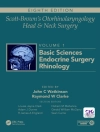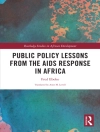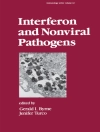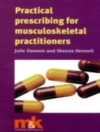Updated edition of bestseller from master spine surgeons uncovers tricks of the trade
Thieme congratulates Todd Albert on being chosen by New York magazine for its prestigious ‘Best Doctors 2017’ list.
Written by world-renowned masters in spine surgery, this expanded third edition details all the major procedures and newest technical innovations in the field. Experts share clinical pearls gleaned from years of surgical experience and ongoing refinement of techniques. Throughout 21 well organized sections, the essential elements of a full spectrum of cervical, thoracic, lumbar, and sacroiliac joint procedures are distilled into 112 concise, easy to understand chapters.
From deformities to spinal tumors, the text facilitates a greater understanding of surgical nuances and potential complications encountered in standard to complex cases. The authors share insights for improving patient safety and outcome such as reducing radiation exposure during fluoroscopy, minimizing intraoperative blood loss, and utilization of the surgical microscope. Updated pain management content encompasses varied strategies including injections, steroids, and nerve blocks.
Special Features:
- More than 400 stunning full color illustrations, diagrams, and photographs replace black and white images from the previous edition
- Online access to 40 videos in which surgeon-authors share personal tips and demonstrate how to deftly navigate challenging, real life cases. Highlights include up close and personal footage shot in the OR and cadaver simulations
- Greatly expanded section on minimally invasive technologies covers Axia LIF, Presacral Interbody Fusion, SI Joint Fusion, and the use of both Robotics and Endoscopy
Up to date and comprehensive, this book is an outstanding resource for orthopedic and neurosurgical fellows and residents, as well as clinicians specializing in spine surgery.
Tabela de Conteúdo
<p><strong>Section I Posterior Cervical Decompression</strong><br>1. Suboccipital Decompression for Chiari I Malformation<br>2. Cervical Laminectomy and Foraminotomy<br>3. Laminoplasty<br>4. Open Reduction of Unilateral and Bilateral Facet Dislocations<br><strong>Section II Posterior Cervical Arthrodesis and Instrumentation</strong><br>5. Occipital Fixation Techniques<br>6. Grafting Methods: Posterior Occipitocervical Junction and Atlantoaxial Segment<br>7. Posterior C1, C2 Fixation Options<br>8. Reduction Techniques for Atlantoaxial Rotary Subluxation<br>9. Posterior Cervical Wiring<br>10. Cervical Lateral Mass Screw Placement (C3–C7)<br>11. Cervical Subaxial Transfacet Screw Placement<br>12. Cervical Pedicle Screw Placement<br><strong>Section III Anterior Cervical Decompression</strong><br>13. Cervical and Thoracic Translaminar Screw Fixation<br>14. Transoral Odontoid Resection and Anterior Odontoid Osteotomy<br>15. Anterior Cervical Diskectomy and Foraminotomy<br>16. Anterior Cervical Foraminotomy Technique<br>17. Exposure of the Vertebral Artery<br>18. Anterior Cervical Corpectomy<br>19. Anterior Open Reduction Technique for Unilateral and Bilateral Facet Dislocations<br><strong>Section IV Anterior Cervical Arthrodesis and Instrumentation</strong><br>20. Odontoid Screw Placement<br>21. Anterior C1, C2 Arthrodesis: Lateral Approach of Barbour and Whitesides<br>22. Placement of Cervical Mesh and Expandable Cages<br>23. Placement of Anterior Low-Profile Cervical Interbody Spacer and Screws<br>24. Anterior Cervical Plating: Static versus Dynamic<br><strong>Section V Posterior Thoracic Decompression</strong><br>25. Transpedicular Decompression<br>26. Costotransversectomy<br>27. Lateral Extracavitary Approach<br><strong>Section VI Posterior Thoracic Arthrodesis and Instrumentation</strong><br>28. Supralaminar, Infralaminar, and Transverse Process Hook Placement<br>29. Sublaminar Fixation<br>30. Thoracic Pedicle Screw Placement: Anatomical, Straightforward, and In-Out-In Techniques<br><strong>Section VII Anterior Thoracic Decompression</strong><br>31. Open Transthoracic Diskectomy<br>32. Open Thoracic Corpectomy via the Transthoracic Approach<br><strong>Section VIII Anterior Thoracic Arthrodesis and Instrumentation</strong><br>33. Anterior Thoracic Arthrodesis after Corpectomy (Expandable Cages, Metallic Mesh Cages)<br>34. Anterior Thoracic and Thoracolumbar Plating Techniques<br><strong>Section IX Posterior Lumbar Decompression</strong><br>35. Open Lumbar Microscopic Diskectomy<br>36. Open Far Lateral Disk Herniation<br>37. Open Laminectomy, Medial Facetectomy, and Foraminotomy<br>38. Safe Exposures in Revision Surgery<br><strong>Section X Posterior Lumbar Arthrodesis and Instrumentation</strong><br>39. Lumbar Pedicle Screw Placement<br>40. Cortical Screw Fixation<br>41. Transforaminal and Posterior Lumbar Interbody Fusion<br>42. Guided Lumbar Interbody Fusion<br>43. Spinous Process Plating<br>44. Transfacet Fixation<br>45. Intrailiac Screw/Bolt Fixation, S2 Alar Iliac Screw Fixation<br>46. Iliosacral Screw Fixation and Transiliac Rod Placement Techniques<br>47. Intrasacral (Jackson) and Galveston Rod Contouring and Placement Techniques<br>48. Sacral Screw Fixation<br>49. Spondylolysis Repair (Pars Interarticularis Repair)<br><strong>Section XI Anterior Lumbar Decompression</strong><br>50. Anterior Lumbar Surgical Exposure Techniques<br>51. Anterior Lumbar Diskectomy<br><strong>Section XII Anterior Lumbar Arthrodesis and Instrumentation</strong><br>52. Anterior Lumbar Corpectomy via a Minimally Invasive Lateral Approach<br>53. Anterior Lumbar Interbody Fusion (ALIF)<br>54. Placement of an Anterior Stand-Alone Interbody Cage with Integrated Screw Fixation<br>55. Anterior and Anterolateral Lumbar Fixation Plating<br><strong>Section XIII Deformity</strong><br>56. Understanding Spinal Alignment and Assessing Pelvic Measurement Parameters for Deformity Correction<br>57. Patient Positioning for Cervical, Thoracic, and Lumbar Deformity Surgery<br>58. Reduction of High-Grade Spondylolisthesis<br>59. Gaines Procedure for Spondyloptosis<br>60. Lumbosacral Interbody Fibular Strut Placement for High-Grade Spondylolisthesis: Anterior Speed’s Procedure and Posterior Procedure<br>61. Rib Expansion Technique for Congenital Scoliosis<br>62. Vertebral Body Stapling and Vertebral Body Tethering for Spinal Deformity<br>63. Posterior Rib Osteotomy for Rigid Coronal Spinal Deformities<br>64. Thoracoplasty: Anterior, Posterior<br>65. Posterior Spinal Anchor Strategy Placement and Rod Reduction Techniques: Vertebral Column Resection versus Direct Vertebral Column Rotation<br>66. Anterior Spinal Anchor Strategy for Deformity: Placement and Rod Reduction Techniques<br>67. Fixation Strategies and Rod Reduction Strategies for Sagittal Plane Deformities<br>68. Vertebral Column Resection<br>69. Posterior Cervicothoracic Osteotomy<br>70. Posterior Smith–Peterson, Pedicle Subtraction, and Vertebral Column Resection Osteotomy Techniques<br>71. Intraoperative Computed Tomography–Guided Instrumentation for Deformity Spine Surgery<br><strong>Section XIV Pain Management</strong><br>72. Cervical Selective Nerve Root Block via Transforaminal Injection<br>73. Atlantoaxial Joint Injection Technique<br>74. Lumbar Transforaminal and Interlaminar Epidural Steroid Injection<br>75. Sacroiliac Joint Injection Technique<br><strong>Section XV Patient Safety</strong><br>76. Techniques for Minimizing Radiation Exposure during Fluoroscopy Procedures<br>77. Effective Use of Neuromonitoring during Spinal Deformity Surgery<br><strong>Section XVI Minimally Invasive Procedures</strong><br>78. Setup and Use of the Microscope in Spinal Applications<br>79. Robotic Applications in Spinal Surgery<br>80. Endoscopic Percutaneous Lumbar Decompressive Techniques<br>81. Minimally Invasive Tubular Posterior Cervical Decompressive Techniques<br>82. Mini-Open Anterolateral Retropleural Approach for Thoracic Corpectomy<br>83. Minimally Invasive Tubular Posterior Lumbar Decompressive Techniques<br>84. Presacral Interbody Fusion<br>85. Minimally Invasive Tubular Posterior Lumbar Far Lateral Diskectomy<br>86. Minimally Invasive Posterior Transforaminal Lumbar Interbody Fusion<br>87. Percutaneous Cement Augmentation Techniques (Vertebroplasty, Kyphoplasty)<br>88. Minimally Disruptive Approach to the Lumbar Spine: Transpsoas Lateral Lumbar Interbody Fusion<br>89. Percutaneous Lumbar Pedicle Screw Fixation<br>90. Anterior Thoracoscopic Deformity Correction and Instrumentation<br>91. Minimally Invasive Rod-Insertion Techniques for Multilevel Posterior Thoracolumbar Fixation<br>92. Minimally Invasive Posterior Deformity Correction Techniques<br>93. Endoscopic Thoracic Decompression, Graft Placement, and Instrumentation Techniques<br>94. Minimally Invasive Sacroiliac Fusion<br><strong>Section XVII Tumor Management</strong><br>95. Spinal Radiosurgery for Metastases<br>96. Surgical Removal of Intradural Spinal Cord Tumors<br><strong>Section XVIII Bone Grafting and Reconstruction</strong><br>97. Anterior and Posterior Iliac Crest Bone Graft Harvesting<br>98. Autologous Fibula and Rib Harvesting<br><strong>Section XIX Spinal Immobilization</strong><br>99. Halo Orthosis Application<br>100. Closed Cervical Traction Reduction Techniques<br><strong>Section XX Spinal Arthoplasty / Motion-Sparing Procedures</strong><br>101. Nucleus Pulposus Replacement Techniques<br>102. Posterior Facet Joint Replacement<br>103. Posterior Interspinous Devices<br>104. Cervical Disk Replacement<br>105. Lumbar Spinal Arthroplasty<br>106. Lateral Lumbar Spinal Arthroplasty<br><strong>Section XXI Complications Management</strong><br>107. Posterior Revision Strategies for Dura and Nerve Root Exposure following a Previous Laminectomy<br>108. Effective Use of Intraoperative Hemostatic Agents and Devices to Minimize Intraoperative Blood Loss<br>109. Managing Catastrophic Great Vessel Injury in Surgery on the Thoracolumbar Spine<br>110. Dural Repair and Patch Techniques: Anterior and Posterior<br>111. The Surgical Management of Junctional Breakdown above a Spinal Fusion in the Thoracic and Lumbar Spine<br>112. Wound VAC Management for Spinal or Bone Graft Wound Infections</p>












